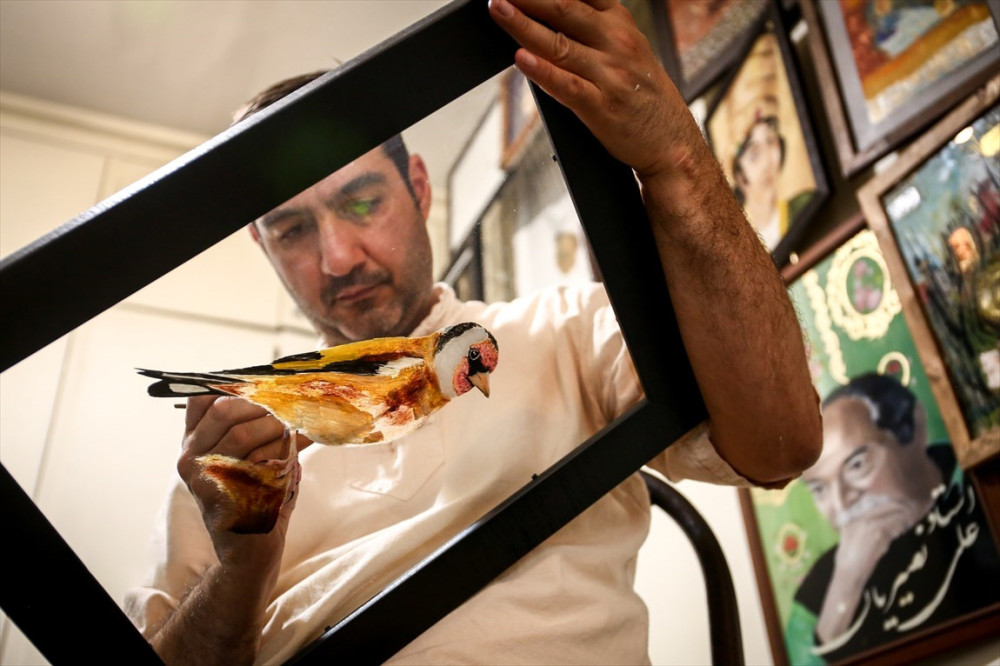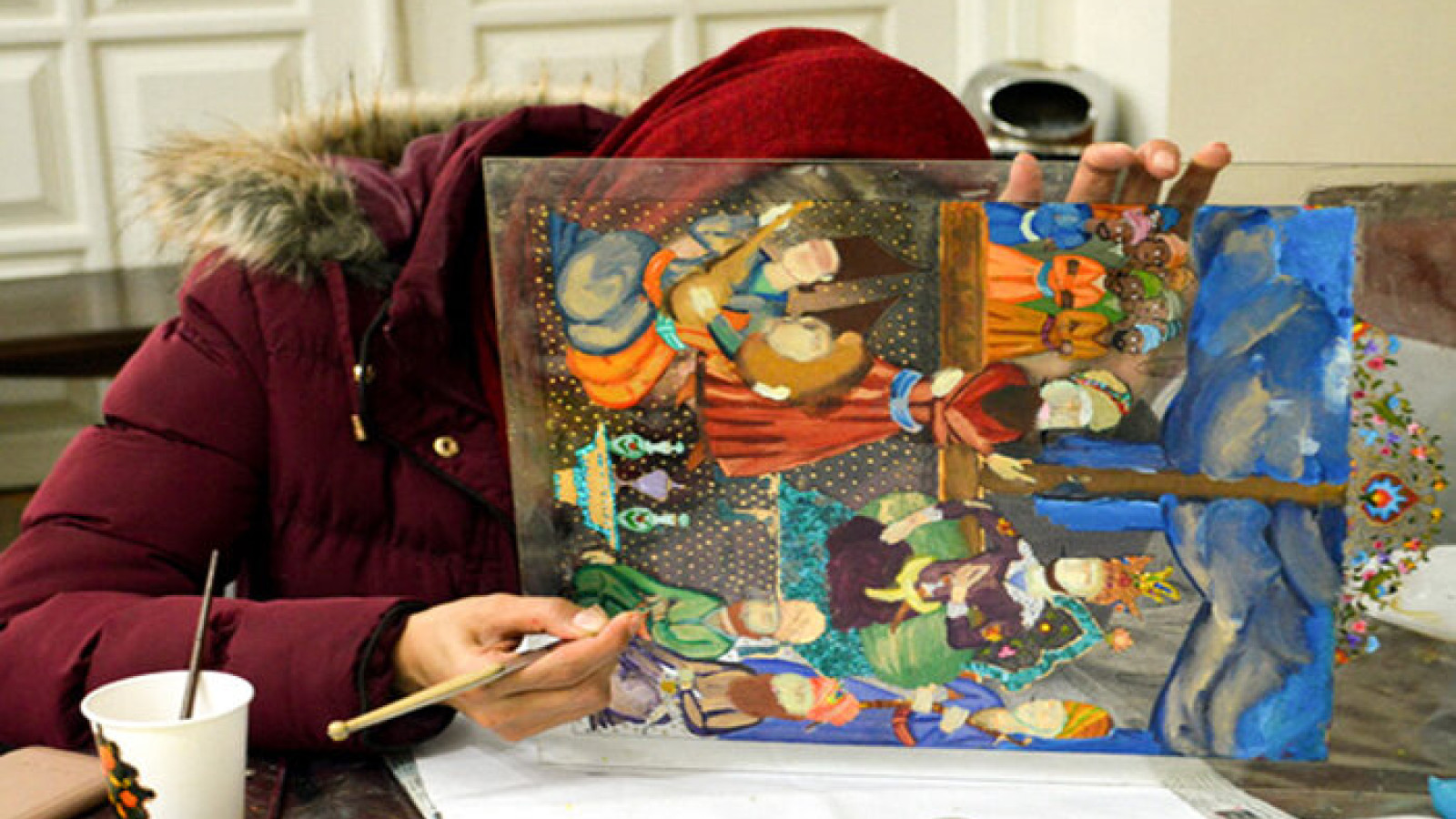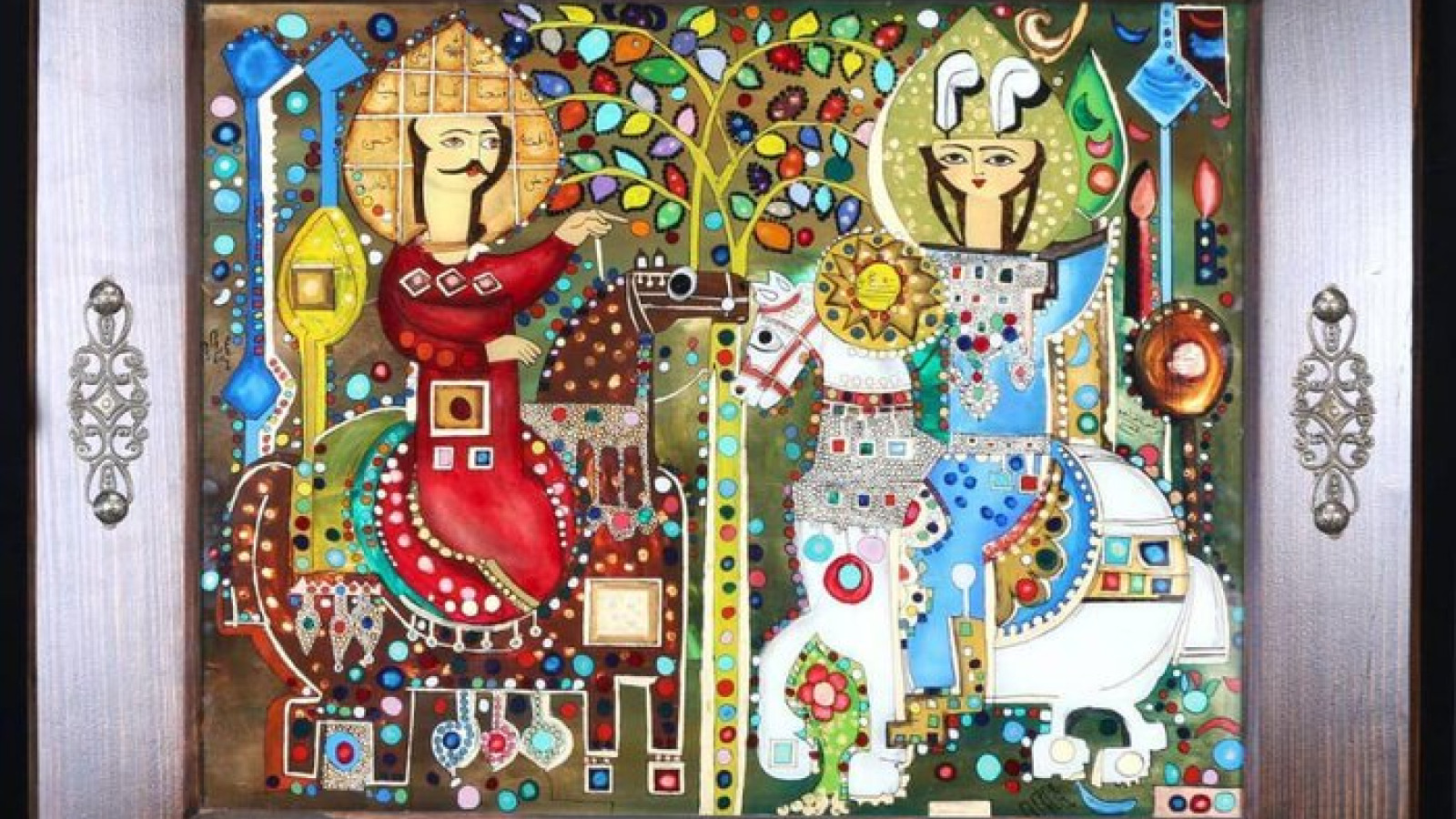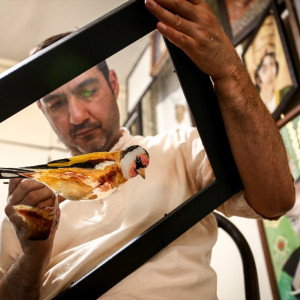
Reverse Glass Painting of Alborz
Reverse glass painting traces back to three hundred years ago in Iran. There is no available document about the introduction of this art in Iran. One belief is that reverse glass painting entered from southern ports where trading was prosperous and Iranians were introduced to this art. On the other hand, some of the specialists know it to have entered Iran from Germany. And another group of specialists, traces reverse glass painting in goods that were imported from India and China and do not believe it was a local and spontaneous art of Iran. But, like many other foreign forms of arts, it successfully adapted to the Iranian Islamic style so much that it can easily be distinguished from arts of other countries. Oil or watercolor paints are used in reverse glass paintings. They contain different ingredients such as gum arabic, animal glue, Tragacanth and grape syrup, and are usually transparent. In the past to add to their density egg yolk was used which gave the paint a good body, but was not durable. Oil paintings have linseed oil as the basic ingredient. Both oil and watercolors were used in the past. First, the parts with watercolor were painted and then parts with oil painting, which had more viscosity and also protected the works. Today most artists choose oil paints.
The first step of reverse glass painting, the intended design is traced by black ink that is basically Chinese ink. Then a layer of varnish is applied which strengthens the sketch and helps the pigments to attach to the glass more efficiently. Finally, the colors are applied. In Iran it is common to use tin plates and papers to protect the back of the glass work. An interesting point about these glass paintings is that in the past it was a costume to use silk threads, gold shimmer and colorful papers to paint the clothing of the holy Imams which added a spectacular effect to the piece. Reverse glass calligraphy incorporates the same technique, too. “Gol o Morgh” (Flowers and Birds), religious stories, holy monuments and shrines, stories from the Shahnameh or Book of the Kings, ancient Iranian stories and calligraphy are the most popular subjects of reverse glass painting in Iran.


